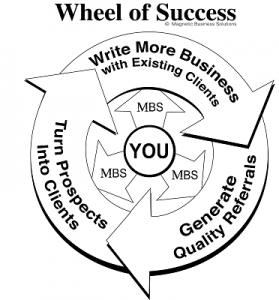It’s
been on the news, so it must be true. Baby Boomers and those over 50
are boosting the number of SME’s in Europe. One group of “Silver Foxes”
have gone further and have established a fast growing international
collaborative consultancy, learning and development, wellbeing,
institute and business services cooperative. With his 70th birthday in
2015, Retirement has brought fresh interest and motivation. So why have
Ricky Kujawa and his team involved themselves in a new business venture
at this time in their lives (only a few of the 24 current members are
under 50)?
“Why not”
Ricky Kujawa, President.
After a busy lifetime which has included extensive travel and opportunities to observe other cultures and organisations in many sectors, Ricky still gets excited about the idea of being able to facilitate change to the benefit of organisations, their shareholders, their people, their customers and their communities. “Who would want to stop doing that? Not me for sure. Says Ricky
“It’s like Mount Everest.”
Archie Waters, Secretary.
Archie’s view is that like the mountain in question it is there. There is an opportunity to make a difference and in doing so to gain new insights into the world and other cultures. Archie has a long history of involvement in social enterprises, outdoor learning, and mediation and is a qualified Psychologist. He also skippers a popular boat trip on Loch Lomond. Clearly he is not someone who wants to sit and watch the clock tick on when there are mountains to climb, real or physcological. “I want to make a difference. I have already travelled to countries that I never imagined I would ever visit and have learned so much from those I met.”
“I’m not old, just older than more people than I was last year.”
Lesley Campbell. Executive Vice President, Learning and Development.
Lesley awakens each morning to a view of the firth of Clyde that would feature in tourist brochures for holidays in Scotland so why is she involved in starting a new business? Well, as this is being written she is en route to Dar es Salaam followed by Johannesburg and then Cape Town so maybe she just likes a change of view. Not so according to Lesley who feels that she has something to give to share with others called experience.
“I am too young to stop working.”
Steven Whalley. Executive Vice President Marketing and Business Services
Steven recently “retired” after a very successful career in Marketing from a very high level post in a world renowned Financial Services company. Faced with the prospect of life without pressures and deadlines, Stephen chose: “A life with stress and deadlines, but they are my deadlines.” Stephen wants to help others with marketing and communication issues but he has not stopped learning. "I have enrolled in a course which will bring me up to date with Social Media and it is accredited. Even better, the Scottish Government are funding 50% of the cost and PTPI Ltd the rest."
“Collaboration suits how I like to work.”
Booker Odenio. Ambassador for East Africa.
Booker has enjoyed a busy, productive and rewarding career. He sees no need to stop. Instead he wants to collaborate internationally to create win-win positions for East Africa, its institutions, organisations and people. I enjoy collaboration so being involved with an international cooperative is ideal.
“Why not”
Ricky Kujawa, President.
After a busy lifetime which has included extensive travel and opportunities to observe other cultures and organisations in many sectors, Ricky still gets excited about the idea of being able to facilitate change to the benefit of organisations, their shareholders, their people, their customers and their communities. “Who would want to stop doing that? Not me for sure. Says Ricky
“It’s like Mount Everest.”
Archie Waters, Secretary.
Archie’s view is that like the mountain in question it is there. There is an opportunity to make a difference and in doing so to gain new insights into the world and other cultures. Archie has a long history of involvement in social enterprises, outdoor learning, and mediation and is a qualified Psychologist. He also skippers a popular boat trip on Loch Lomond. Clearly he is not someone who wants to sit and watch the clock tick on when there are mountains to climb, real or physcological. “I want to make a difference. I have already travelled to countries that I never imagined I would ever visit and have learned so much from those I met.”
“I’m not old, just older than more people than I was last year.”
Lesley Campbell. Executive Vice President, Learning and Development.
Lesley awakens each morning to a view of the firth of Clyde that would feature in tourist brochures for holidays in Scotland so why is she involved in starting a new business? Well, as this is being written she is en route to Dar es Salaam followed by Johannesburg and then Cape Town so maybe she just likes a change of view. Not so according to Lesley who feels that she has something to give to share with others called experience.
“I am too young to stop working.”
Steven Whalley. Executive Vice President Marketing and Business Services
Steven recently “retired” after a very successful career in Marketing from a very high level post in a world renowned Financial Services company. Faced with the prospect of life without pressures and deadlines, Stephen chose: “A life with stress and deadlines, but they are my deadlines.” Stephen wants to help others with marketing and communication issues but he has not stopped learning. "I have enrolled in a course which will bring me up to date with Social Media and it is accredited. Even better, the Scottish Government are funding 50% of the cost and PTPI Ltd the rest."
“Collaboration suits how I like to work.”
Booker Odenio. Ambassador for East Africa.
Booker has enjoyed a busy, productive and rewarding career. He sees no need to stop. Instead he wants to collaborate internationally to create win-win positions for East Africa, its institutions, organisations and people. I enjoy collaboration so being involved with an international cooperative is ideal.
Written by












